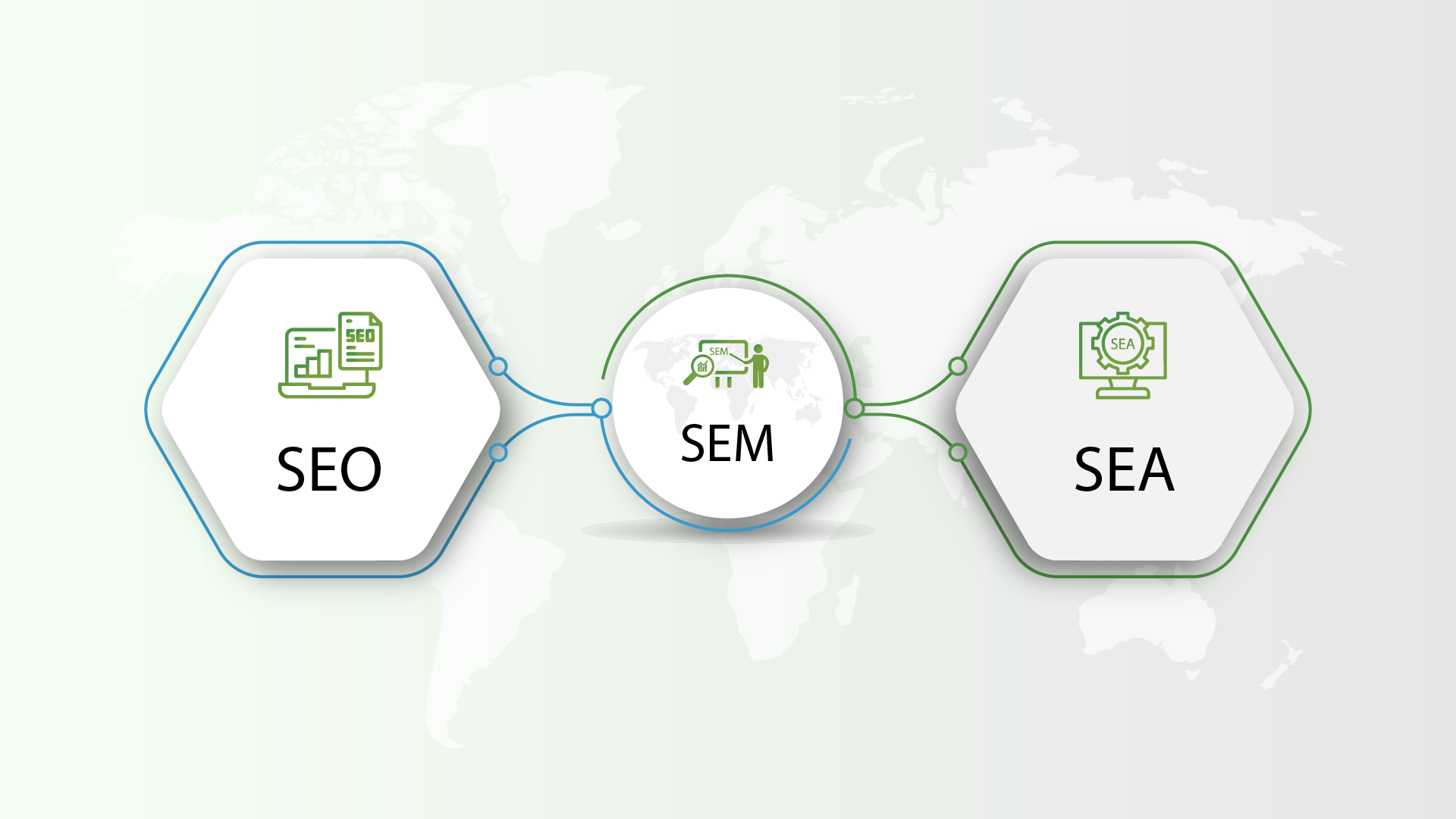Search Engine Marketing (SEM) is often a misunderstood concept in the realm of digital marketing. Many people mistakenly believe that SEM refers solely to paid search advertising. However, SEM is a broader term that encompasses both Search Engine Optimization (SEO) and Search Engine Advertising (SEA). In this blog post, we will clarify what SEM truly involves and highlight the critical differences and synergies between SEO and SEA.
What is SEM?
SEM is an umbrella term that includes all strategies used to promote a website in search engine results pages (SERPs) to increase visibility and drive traffic. It includes both organic and paid strategies:
- Search Engine Optimization (SEO): Techniques aimed at improving organic search rankings.
- Search Engine Advertising (SEA): Paid strategies to place ads on search engine results pages.
Common Misconception: SEM is Only Paid Advertising
A prevalent misunderstanding in digital marketing is equating SEM solely with paid search advertising. This misconception arises because SEA is a significant component of SEM, often requiring substantial investment. However, SEM’s true scope includes both the organic tactics of SEO and the paid tactics of SEA.
The Two Pillars of SEM: SEO and SEA
Search Engine Optimization (SEO)
Definition: SEO is the practice of optimizing a website to achieve higher rankings in organic search engine results. It involves various techniques that enhance a site’s visibility and relevance to search engines.
Key Components of SEO:
- On-Page SEO:
- Content Quality: Crafting informative, engaging, and valuable content.
- Keyword Optimization: Using relevant keywords strategically in content, titles, and meta descriptions.
- User Experience: Ensuring easy navigation, fast loading times, and mobile-friendliness.
- Off-Page SEO:
- Backlinks: Earning high-quality backlinks from reputable sites.
- Social Media Engagement: Driving traffic through social media channels.
- Technical SEO:
- Site Structure: Making sure search engines can easily crawl and index the website.
- Security: Implementing HTTPS for secure data transmission.
Benefits of SEO:
- Cost-Effective: Focuses on organic traffic without ongoing ad costs.
- Long-Term Impact: Sustainable results that build over time.
- Credibility: Higher organic rankings often lead to greater user trust.
Search Engine Advertising (SEA)
Definition: SEA involves paying for ad placements on search engine results pages. These ads are usually displayed at the top or bottom of the SERPs and are marked as advertisements.
Key Components of SEA:
- Pay-Per-Click (PPC):
- Ad Platforms: Using services like Google Ads and Bing Ads.
- Ad Copy and Creative: Crafting compelling ads to attract clicks.
- Targeting and Bidding: Selecting keywords and managing bids to optimize ad spend.
Benefits of SEA:
- Immediate Results: Quick visibility and traffic.
- Targeted Reach: Precision in targeting specific audiences.
- Measurable ROI: Detailed analytics to track and optimize performance.
Integrating SEO and SEA for Optimal SEM
While SEO and SEA are distinct strategies, their integration can yield the best results. A well-rounded SEM approach leverages the strengths of both:
- Short-Term Gains: Use SEA for immediate visibility and traffic, especially for competitive keywords.
- Long-Term Growth: Invest in SEO for sustainable, organic traffic and long-lasting online presence.
Conclusion
Understanding SEM as a combination of both SEO and SEA is crucial for a comprehensive digital marketing strategy. While SEO builds a strong, enduring foundation, SEA provides the flexibility to achieve quick results. By utilizing both, businesses can maximize their online visibility and drive continuous traffic to their websites.
